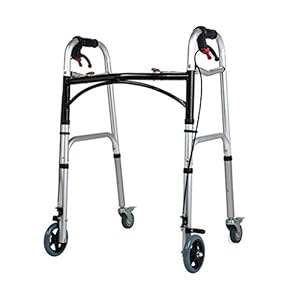What’s ‘pure beekeeping’?
The query ought to somewhat be, ‘is any beekeeping pure?’ and the reply should be that, in nature, solely bees maintain bees.
As people, our curiosity in them has been primarily egocentric: we noticed them because the supply of a uniquely scrumptious, candy substance and paid little heed to their pervasive presence within the pure world, the place, largely unnoticed, they went about their enterprise of farming flowers.
Farming? In the identical method that horticulturists choose plant varieties for breeding, so have the bees and different pollinators chosen, over thousands and thousands of years, the vegetation that present them with meals within the types of pollen and nectar and so have enormously influenced the colors and patterns of our landscapes and the scents and flavours of the herbs and the hedgerow fruits that we now have taken and additional developed into the meals we eat.
On this sense, bees might certainly be considered farmers. They’ve been rigorously and assuredly deciding on vegetation from among the many out there mutations and crosses for greater than 100 million years, whereas we might have been dabbling in farming for a mere 10,000 or so. Whether or not they did their work ‘consciously’, or it merely occurred as a side-effect of their food-gathering actions, is an open query to which we might by no means have a passable reply. Such is the case with most of the most innocent-sounding questions on bees.
When it comes to a sensible understanding of nature, in comparison with the bees we’re however infants. Earlier than we turned up, they’d the flowers to themselves – give or take the odd dinosaur – they usually made an impressive job of serving to to create common, recklessly various biodiversity: by no means permitting one species to dominate and all the time guaranteeing that there can be, within the lands the place they discovered it comfy to reside, one thing in flower that would offer them with sustenance in any respect attainable instances.
In cooler areas, honeybees realized to reside in enclosed areas, the place they may management the temperature and humidity and defend their younger from airborne ailments, with the assistance of resinous substances made by timber. They realized that, by cultivating sure vegetation, they may collect enough portions of nectar within the heat season to allow them to retailer it in concentrated kind in sealed containers, the place it could not spoil and so present them with meals to final them till the air once more grew to become heat and new flowers emerged.
They understood that nectar was a watery substance and that containers for it had due to this fact to be impermeable to water, in order that they realized to make beeswax – essentially the most water-proof substance in all of the pure world – from glands in their very own our bodies. They understood the power value of producing wax and so devised a system of cell development that made essentially the most environment friendly attainable use of it, so it grew to become a larder and a nursery and a thermal reservoir multi function.
They grew to become accustomed to the evaporation and condensation of water inside the hive, studying to show their residing house into an environment friendly condenser to be able to enhance the recycling of each water and the warmth contained within the vapour.
Honeybees realized to defend themselves towards predators by appearing collectively, in the identical method that they labored collectively to herald meals and nurse their younger. They realized that the important thing to thriving of their world was co-operation and co-ordination with the seasonal adjustments. That they had no want to say territory for themselves on the expense of different species and they also had no have to waste power on aggression: there was loads for all.
Their cousins, the bumblebees, have been in a position to fly in decrease temperatures as a result of their bulkier our bodies and thicker fur and have been ready to make use of their longer probosces to succeed in nectar in sure flowers that honeybees left alone. Different species tailored to a specific vary of flowers that have been in season simply after they selected to grow to be lively, whereas some grew to become carnivorous, and so, inside the Hymenoptera order, the bees, ants and wasps diverged and tailored, every to their very own ecological area of interest.
Honeybees targeted on their numerical benefit and distinctive skill to succeed in out into the encompassing panorama, concentrating and processing its merchandise inside the house of their rigorously laid-out nest. This made them extra enticing to sweet-loving predators, so they chose properties in hole timber, properly away from the bottom, maintaining their entrance small and well-protected by guards, which have been on the level of graduating from inner duties to foraging.
When people ultimately appeared, they have been simply one other minor nuisance, though they quickly got here armed with smoke and fireplace to say their prize. Thousands and thousands of years beforehand, bees had realized that smoke was usually the harbinger of doom and that filling themselves with honey and evacuating their dwelling was the one actual defence. People mistook this behaviour for passivity and so started the behavior of smoking bees earlier than robbing them.
For tens of 1000’s of years, human interference within the lives of bees was restricted to stealing honey from them a few times per 12 months. Most colonies escaped such consideration, as they have been inaccessible to those bare apes, who didn’t appear to be as intelligent at climbing timber as their bushy ancestors.
Early makes an attempt at maintaining bees inside attain to be able to rob them extra simply concerned putting containers akin to sections of hole tree, kind of at floor degree and making them enticing to passing swarms. Variations on this theme have been employed by many cultures, based on locally-available supplies: straw skeps have been utilized in locations the place grain farming had been developed; reed skeps within the marshes; clay pots and pipes the place solar was plentiful and rainfall low; logs and cork bark the place such issues grew freely, and volcanic rock was hollowed out within the extra geologically unstable areas. The bees have been left to handle their very own affairs till such time as a few of their shops might profitably be robbed.
It was not till the appearance of the movable-frame hive and subsequent invention of the motorcar, adopted by the introduction of poisonous chemical substances into what had hitherto been what we might now name a completely ‘natural’ agricultural system that bees’ actual issues with people started.
The movable-frame hive, pioneered by Revd. Lorenzo Lorraine Langstroth within the USA, was the primary actually profitable try at maintaining honey separate from brood, such that honey might be harvested in bulk with out worry of ‘corruption’ by eggs and creating larvae. It thus signalled the daybreak of a brand new relationship between man and bees: that of grasp and servant.
Langstroth’s hive, which, in tune with the Victorian zeitgeist, he thought to be fulfilling ‘God’s goal’ in giving man mastery over nature, grew to become the mannequin upon which was based mostly nearly each subsequent hive design that was created with the intention of offering the beekeeper with a most yield of honey. Business beekeeping was thus born in 1852 and got here of age with the introduction of self-powered vans some thirty or forty years later. By the start of the twentieth century, it grew to become attainable to move hives rapidly in giant numbers to the place crops have been in flower, enabling the bee farmers (as they grew to become identified) to supply a cell pollination service in addition to to learn from the massive harvests of honey.
By the 20th century, the size of operations grew to become considerably bigger. Within the USA, bee farmers controlling 1000’s – even tens of 1000’s – of hives grew to become commonplace, and the strategies of the industrial honey producer have been taught to and aped by the house beekeeper, who had no motive to query the strategies of ‘skilled’ males. Thus we see to at the present time learners being taught to examine their hives each week for queen cells and to chop them out to stop swarming; to mark queens with paint and clip their wings and to carry out various different ‘administration’ operations to train their ‘God-given’ proper to regulate the lives of those wild bugs.
In the meantime, a German conglomerate by the identify of I.G.Farben branched out from its core business of dyes into agricultural chemical substances, derived from its improvement of chemical warfare merchandise throughout World Battle I, and started making enormous income from the sale of pesticides and fertilizers. ‘Fast-fix’ industrial agriculture was born and industrial beekeeping adopted swiftly in its wake.
Nevertheless, together with the rise in scale got here a commensurate enhance in illness. From being a minor nuisance within the nineteenth century, foul brood grew to become a severe menace, destroying enormous numbers of colonies and resisting eradication. In Britain, throughout Throughout WWII, Winston Churchill – himself a beekeeper – put in place the primary Foul Brood Inspecors, in an effort to get the epidemic beneath management by the easy technique of destroying affected colonies, on the sound precept that eradicating susceptibility to illness from breeding inventory will are inclined to strengthen the survivors. The success of this method is evidenced by the relative rarity of AFB outbreaks in Britain some 70 years later.
The opposite dread illness – the unrelated and considerably much less virulent European Foul Brood (EFB) – proved much less straightforward to deal with and has in truth grow to be considerably extra widespread in recent times.
Different ailments, corresponding to Nosema apis and most lately Nosema cerana are endemic and the now nearly ubiquitous parasitic mite Varroa destructor, with its assortment of vectored viruses, have taken an enormous toll on the honeybee inhabitants within the final half century, regardless of a barrage of ‘drugs’ which have’ in all chance, made the issues worse.
The tendency of the traditional beekeeping fraternity is to throw but extra chemical substances that the issue, within the hope {that a} ‘magic bullet’ will at some point be discovered and remedy all their issues. To my thoughts, that is precisely the other of what must be carried out, since – as Einstein himself indicated – we are going to by no means remedy such issues utilizing the kind of pondering that created them. If, when Varroa was first found in Britain in 1992, we had carried out nothing however cease all imports of bees, ban all drugs and allowed the bees to search out their very own method of coping with the problem, we might have misplaced a lot of colonies – maybe 90% or extra – however by now, 20 years later, we might nearly actually have a rising inhabitants of locally-adapted, mite-resistant bees. As a substitute, we have been persuaded that we should always put pyrethroid-based miticides into our hives to kill off the overseas invaders. Inside a couple of years – most likely exacerbated by the simultaneous use of pyrethroids on a lot of the farmland of Britain – Varroa grew to become resistant to such therapy and we realized that we had, removed from fixing the issue, made it worse by deciding on for pyrethroid-resistant mites and the drug pushers had made a pleasant revenue from the train.
It appears clear to me that whereas we proceed to prop up our poisonous meals manufacturing system for the advantage of the agri-chemical-biotech business, we are going to merely repeat the identical ill-conceived, harmful cycles till we achieve doing irreparable injury to our soil, our meals provide and our planet. Given the obvious resistance of people to studying long-term classes, I’m not optimistic about the way forward for the intrepid but weak Apis mellifera or that mis-named biped, mired in superstition, greed and self-interest: Homo sapiens.
‘Pure beekeepers’, by themselves, can not hope to resolve the larger drawback of a dysfunctional agricultural system, however we will play our half. We’ve pure allies within the permaculture motion, the place taking an extended view is on the centre of its guiding philosophy. We’re naturally aligned with natural growers and all these for whom nurturing wholesome soil is prime. We’ve huge and largely untapped potential assist among the many basic inhabitants, who want to listen to the reality about what’s being perpetrated on our land within the identify of ‘progress’.
If we and the bees are to have a shared future, we now have a duty to assist upcoming generations to re-discover their deep connection to the pure world – maybe in some type of ‘farm-and-forest faculty’ – and thereby to redeem our collective failure to wrest management of our meals manufacturing system from the arms of the power-hungry few.
Trending Merchandise










